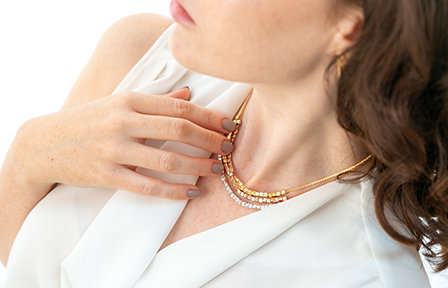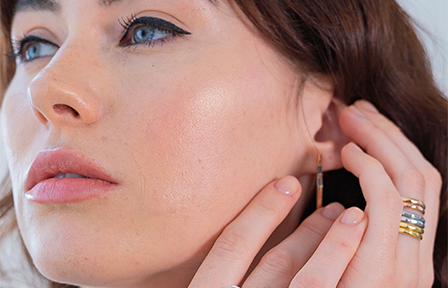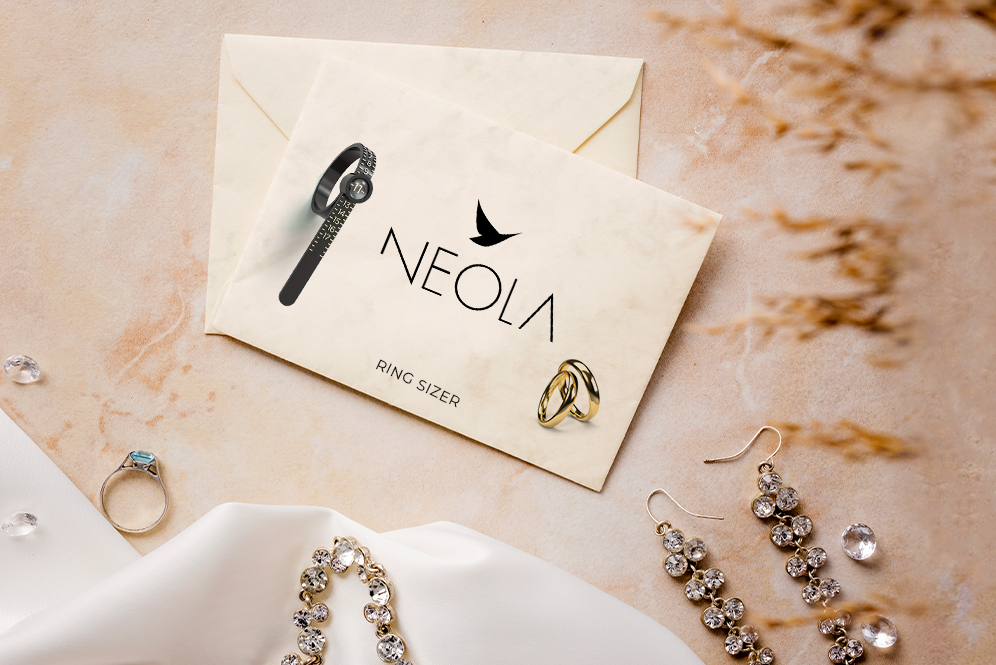Jewellery Care
The quality of our jewellery is extremely important to us and this guide will help you maintain that quality for as long as possible. There are many factors that can influence the wear and tear of your jewellery but above all it is important to remember that jewellery is delicate and needs to be carefully looked after so you can enjoy wearing it forever.
HOW SHOULD I CLEAN MY JEWELLERY?
Clean your jewellery carefully with a soft, non-abrasive and lint-free cloth or chamois. Doing this occasionally will help to maintain or bring back its shine.
Avoid using ‘dip’ polish or abrasive jewellery cleaners as these contain harsh chemicals and can destroy your jewellery over time.
HOW CAN I PROTECT MY JEWELLERY WHILE I'M WEARING IT?
We strongly advise that you remove jewellery when bathing, showering or swimming because water and chemicals (especially chlorine) can affect the longevity of the gold plating, encourage silver to tarnish and dull gemstones.
Chlorine, salt water and fresh water can all damage precious metals and gemstones by dulling or eroding them. Soapy water when bathing and showering can also leave a thin film, which makes the metal seem dull. It is best to take off your rings when washing your hands.
TIPS TO PROTECT YOUR JEWELLERY
As a general care tip, your jewellery should be the last thing you put on before going out and the first thing you remove upon coming home.
Keep creams and sprays well away from your jewellery pieces as they are particularly susceptible to damage from the effects of chemicals in perfume, hairspray, make-up, nail polish remover, body oils, sunscreen and deodorant.
Always apply make-up, hair spray, scent and moisturiser before putting your jewellery on as the chemicals in these can affect the beauty and shine of your jewellery.
Remove jewellery when doing household tasks such as cleaning, playing sport or other strenuous activities because jewellery may become scratched or harmed by sharp blows. Extreme temperatures and strong UV rays can cause gemstones to fade in colour and lose their original beauty, so do not keep jewellery in direct sunlight and remove it whilst sunbathing.
HOW SHOULD I STORE MY JEWELLERY?
Storage is important. Always store your pieces - gemstones in particular - individually so that they don't rub together, scratch or tangle.
Keep jewellery in a dark, cool and dry place. Sterling silver in particular will naturally oxidise over time when exposed to air, and eventually tarnish, and the best prevention for this is to store it in a closed box or sealed bag. We recommend occasional cleaning of your silver jewellery to maintain shine and keep oxidation at bay.
Don't place jewellery in direct sunlight as prolonged exposure can cause gemstones to fade and lose their colour.
Ensure pieces are completely dry before storing.
Keep chains fastened at the clasp to avoid tangling.





